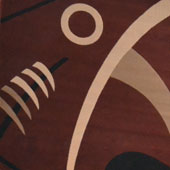Design Resource
Carpet Weaving - Bhadohi
The Art of Weaving
by
Prof. Ravi Mokashi Punekarwith Ashish Yadav
Once the designs are decided and drawn, the wrapping i.e. arranging of the yarn for lengthwise weaving and finally knotting, weaving and then trimming of the carpet is done.
Warping:
Wrapping is arranging of the yarn so that it runs lengthwise in weaving. Twisted thread is used for fine and exact weaves and jute is also used for rougher patterns. In warping operation, all the warps for the carpet weaving are brought to the thick iron rod and then transferred to a thin steel rod. Then it is folded and taken to the loom for mounting on the loom and the process of weaving is carried out.
Knotting and Weaving:
In this process the pile yarn is introduced into the carpet by tying knots. Depending on size of the carpet, one or more weavers work on a loom. The number of knots is around 60-200 knots per square inch. Higher the quality of the carpet, greater is the number of knots per square inch. The graphic designs that are drawn on a graph are instructed by a map reader or another weaver to the weavers knotting the carpet. Tying of these knots is a skilled job and each weaver ties knots row after row speedily with great dexterity. Two types of knots tied are:
a) Ghiordes or Turkish knot and
b) Sehna or Persian knot.
Insertion of any type of knot is done in such a manner that the tuft lies at an acute angle to the back. The weaver can choose from the large number of different tufts to give a variety of patterns and colors to his carpet and he thus creates an unparallel work of art. Tools used for weaving are scissors, iron rods, levers and comb beaters.
Trimming:
The finished carpet is taken from loom and trimming is done for proper designs and patterns.



























